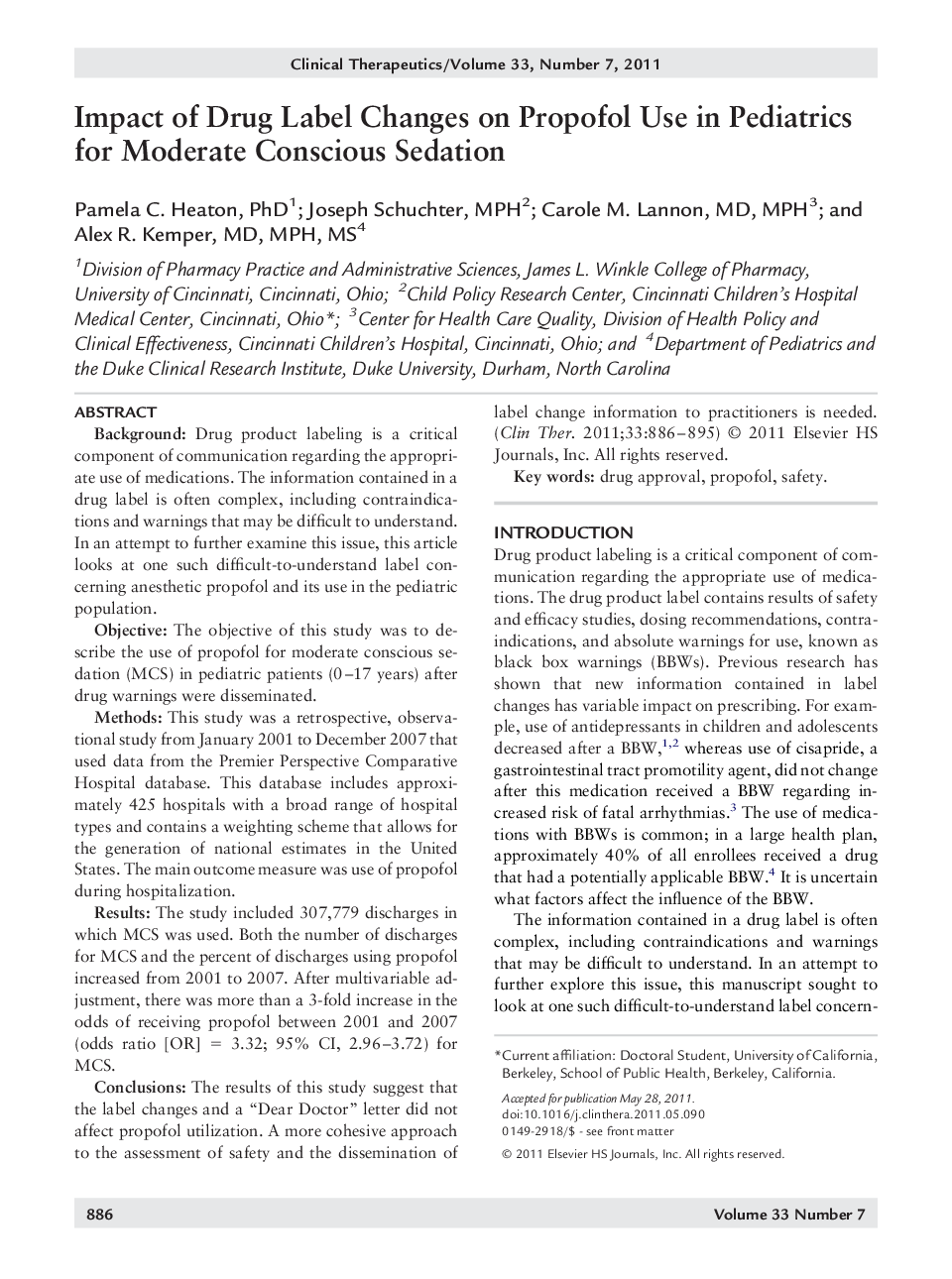| Article ID | Journal | Published Year | Pages | File Type |
|---|---|---|---|---|
| 2527489 | Clinical Therapeutics | 2011 | 10 Pages |
BackgroundDrug product labeling is a critical component of communication regarding the appropriate use of medications. The information contained in a drug label is often complex, including contraindications and warnings that may be difficult to understand. In an attempt to further examine this issue, this article looks at one such difficult-to-understand label concerning anesthetic propofol and its use in the pediatric population.ObjectiveThe objective of this study was to describe the use of propofol for moderate conscious sedation (MCS) in pediatric patients (0–17 years) after drug warnings were disseminated.MethodsThis study was a retrospective, observational study from January 2001 to December 2007 that used data from the Premier Perspective Comparative Hospital database. This database includes approximately 425 hospitals with a broad range of hospital types and contains a weighting scheme that allows for the generation of national estimates in the United States. The main outcome measure was use of propofol during hospitalization.ResultsThe study included 307,779 discharges in which MCS was used. Both the number of discharges for MCS and the percent of discharges using propofol increased from 2001 to 2007. After multivariable adjustment, there was more than a 3-fold increase in the odds of receiving propofol between 2001 and 2007 (odds ratio [OR] = 3.32; 95% CI, 2.96–3.72) for MCS.ConclusionsThe results of this study suggest that the label changes and a “Dear Doctor” letter did not affect propofol utilization. A more cohesive approach to the assessment of safety and the dissemination of label change information to practitioners is needed.
